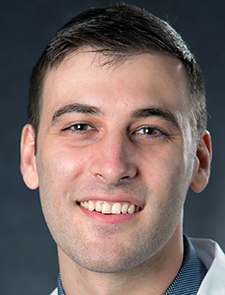
Dr. Long
Clinical question: How did GOLD revise its prior recommendations for the diagnosis and management of chronic obstructive pulmonary disease (COPD)?
Background: The World Health Organization and the National Institutes of Health convened the GOLD expert panel to make recommendations regarding the diagnosis and management of COPD. The 2023 GOLD report addressed prior concerns that the 2017 report lacked diagnostic utility in daily clinical practice. For example, an exacerbation was previously defined as an “acute worsening of respiratory symptoms that results in additional therapy,” and severity was defined after the fact based on what therapies were used, rather than objective measures that could guide initial treatments.
Study design: Systematic review guideline update (studies reviewed through 2022)
Setting: Inpatients and outpatients at risk for or with known or suspected COPD
Synopsis: For hospitalists, the most important updates include the following:
The GOLD assessment/treatment groups were pared down from four to three, notably with a focus on dual long-acting beta-agonist (LABA) and anti-muscarinic (LAMA) bronchodilators, rather than LABA or LAMA monotherapy, for those with significant symptoms or any hospitalization for a COPD exacerbation. An inhaled corticosteroid (ICS) should be added to LAMA+LABA (i.e., triple therapy) if elevated blood eosinophils (≥300 cells/microliter). This has been shown to be superior to LABA+ICS, though note recurrent cases of pneumonia may be an indication to stop ICS therapy.
They describe new criteria to grade the severity of exacerbations. A moderate exacerbation requires three or more of five criteria: dyspnea, tachypnea, tachycardia, resting oxygen saturation on blood gas testing <92% and/or showing a change >3%, or CRP ≥10 mg/L. A severe exacerbation is the same plus acidosis on arterial blood gas, typically with new or worsening hypercapnia.
Hospital management remains similar to that recommended prior: short-acting beta-agonists (SABA), with or without short-acting muscarinic antagonists (SAMA), long-acting bronchodilators per above—ideally during exacerbations, prednisone 40 mg equivalents for five days, antibiotics (if sputum change) for five to seven days, and goal oxygen saturation on pulse oximetry 88 to 92%. Referral to pulmonary rehab after discharge remains controversial and of uncertain benefit. Five-year mortality after a COPD exacerbation requiring hospitalization is high, around 50%.
Bottom line: The GOLD 2023 report clarifies COPD diagnosis and exacerbation assessments, and chronic management of suspected or known COPD in hospitalized patients should rely on LABA+LAMA (with or without ICS) in addition to typical acute management with shorter-acting bronchodilators, oxygen, steroids, and antibiotics as indicated.
Citation: Agustí A, et al. Global initiative for chronic obstructive lung disease 2023 report: GOLD executive summary. Am J Respir Crit Care Med. 2023;207(7):819-37.
Dr. Long is an internal medicine resident, PGY-3, at Maine Medical Center, Portland, Maine, and Tufts University School of Medicine, Boston.